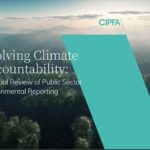
COVID-19 has intensified focus on sustainable finance and sustainability reporting. The stream of social media posts, articles in the FT and press releases by connected organisations have increased. The #BuildBackBetter hashtag is being used to advocate for economic interventions post COVID-19 to align with sustainable development. Alongside this, ‘concern’ about a proliferation of bodies setting standards and frameworks has led to a proliferation of bodies claiming a purpose to ‘harmonise’ them.
The IIRC and subsequently the IMP have this as a core aim while UNCTAD-ISAR and UNEP have joined forces “to evaluate the existing reporting frameworks in order to propose key principles and core indicators of SDG reporting”.
The World Economic Forum (WEF) white paper Toward Common Metrics and Consistent Reporting of Sustainable Value Creation developed with the Big 4 accounting firms, put out for consultation in January 2020, identifies 22 core metrics included in current standards. 18 of them come from GRI Standards.
Then last month, an IFRS Foundation Trustee, argued that there’s a “compelling case for the IFRS Foundation to play a role in helping to develop a set of globally comparable international standards in sustainable reporting, starting perhaps with climate-related risk disclosure”. Indeed the TCFD Recommendations foreshadowed a much needed increase in climate related accounting considerations and financial disclosures. It might be argued that IFRS has been slow to recognise this and review relevant standards accordingly. But sustainability reporting does and must cover issues beyond those that influence the financial statements and I am not convinced of the compelling case for IFRS to take over non-financial reporting (NFR).
A few days ago the International Federation of Accountants (IFAC) announced that it “stands ready, as a global voice and convener of the accountancy profession, to facilitate coordination, assimilation, and convergence in sustainable reporting approaches”. And Accountancy Europe has also this week claimed to be “leading the non-financial reporting debate”.
Accountancy Europe’s Follow-up paper: Interconnected Standard Setting for corporate reporting published this week notes that the European Commission has committed to issue a mandate to the European Financial Reporting Advisory Group (EFRAG) to launch preparatory work for the development of Non-Financial Reporting standards.
CDP, CDSB, GRI and SASB used the Accountancy Europe paper to issue a statement that they are working together (apparently without all the help that has been offered) to provide a basis for a globally harmonised system.
I have been arguing, along with academic colleagues, for increased and enforced mandatory sustainability reporting since the 1990s, so the EU’s intention to increase it through the NFR Directive is welcome.
But amidst the harmonisation frenzy a number of myths are circulating as self-interest and politics prevail.
Myth 1 – We urgently need global standards and harmonisation
The most common argument put forward for harmonisation is that the number of different standards and frameworks confuses reporters and is costly for them.
As an IFRS Trustee rightly points out, IFRS has been successful in harmonising financial reporting practices which 30 years ago differed widely due to the variation across the globe in interconnected drivers of accounting systems (discussed here). That success is tempered by the extent to which (lesser developed) nations have the people and financial resources to implement and enforce them.
However, unlike financial reporting, the voluntary sustainability reporting frameworks/guidelines/standards that emerged in the 1990s starting with GRI and AA1000 have always been global. Harmonisation across national boundaries is therefore a non-issue except to the (too limited) extent that such reporting is mandatory. There is a likelihood that some jurisdictions might get left behind as mandatory reporting requirements increase.
But we do clearly need more organisations reporting better and greater consistency in reporting across organisations. Increased mandatory reporting would help – if it were enforced – but large global companies seek to report beyond mandatory requirements, hence the need for the work of the GRI, IIRC, TCFD and SASB. Better alignment of existing standards and a conceptual framework that sits above them would make this easier.
Myth 2 – Materiality should comprise financial materiality for investors and impact on stakeholders
The current notion of double materiality in the EU’s NFR Directive with its narrow focus on financial materiality does little to facilitate achieving the UN SDGs. The main concern of investors is with value creation (or destruction) more broadly defined of which financial materiality is a subset. The definition of materiality in the SDGD Recommendations (which is the outcome of a consultation) connects materiality from a broad value creation (rather than merely financial) perspective with impact on sustainable development:
Material sustainable development information is any information that is reasonably capable of making a difference to the conclusions drawn by:
• stakeholders concerning the positive and negative impacts of the organisation on global achievement of the SDGs, and;
• providers of finance concerning the ability of the organisation to create long term value for the organisation and society.
SDGD Recommendations
These components align with the (proposed revised) GRI and IIRC definitions, respectively, and incorporates the SASB focus (see their website) on financial materiality. Consistent with the first part of this definition, GRI’s draft updated universal Standards released this week now define materiality in terms of impact on “on the economy, environment, or people, including on human rights, as a result of its activities or business relationships”. The IIRC addresses the second part and SASB a subset of that second part.
The IFRS Trustee argues that financial reporting and sustainability reporting should have “a high degree of correlation with each other” and that IFRS is well placed to ensure connectivity of sustainability and financial reporting. What does this mean? It could perhaps mean that sustainability reporting under IFRS would be driven the ability to measure financial outcomes of sustainability impacts and activities. Clearly this would lead to incomplete sustainability reporting. If it means encouraging “integrated thinking”, not many would argue, but then the emphasis would need to be on materiality to value creation, broadly defined, as the IIRC do – not financial materiality alone.
The IFRS focus on the financial comes through in a March 2020 International Accounting Standards Board paper on the revised objective of an updated Management Commentary Practice Statement: “to support primary users in assessing the entity’s prospects for future cash flows and in assessing management’s stewardship of the entity’s economic resources”. [emphasis added]
The focus on implications for cash flow and economic resources is at also odds with the World Economic Forum (WEF) white paper, Toward Common Metrics and Consistent Reporting of Sustainable Value Creation, developed with the Big 4 accounting firms which instead include ‘materiality to long term value creation’ as a key filter for determining disclosures.
The April 2020 IASB meeting considered a paper on ‘resources and relationships’ that should be discussed in the Management Commentary. The list includes natural resources but only insofar as the organisation’s business model and strategy depend on them. NFR needs to look beyond this.
Myth 3 – Consistent metrics are paramount
A focus on metrics versus disclosures on management approach, strategy and governance -oversight is likely to be preferred in jurisdictions with a more rules-based (as opposed to a principles-based) approach to accounting and reporting. Metrics are easier, less risky and hence cheaper to get assurance on.
The problem with a focus on metrics is that they have limited power to change what a business does and how it does it. Research shows that it is the requirement to disclose on strategy, management approach with governance oversight that gets organisations thinking about what they do and how they do it. The IIRC first filled the gap on strategy.
Myth 4 – Current standard setters don’t have sufficiently robust governance structures
I’ve previously mentioned claims that only accounting standard setters are equipped with proper governance structures. But all the main framework/standard setters go out to consultation. (SASB’s consultation process is set out here). The GRI already has the legitimating structures of a standard setting body with an independent Global Sustainability Standards Board (GSSB) and a Due Process Oversight Committee whose members are appointed by an Independent Appointments Committee. Critical to sustainability reporting standards, and achieving the SDGs, GRI is a multi-stakeholder organisation with representation from key stakeholder groups in all governance bodies along with the GSSB. Its governance structure is outlined at the end of their response to the EU’s consultation in the NFR Directive with a note of their willingness to adapt it to suit the EU’s needs
Myth 5 – Current standards are a free good and therefore cheap
One of the reasons for the proliferation of standards is that they are not cheap to develop and offer as a free good. The GRI, IIRC, SASB, TCFD standards/recommendations/framework address different issues for different audiences and were therefore able, at least initially, to increase the pool of funding directed at developing non-financial reporting. The three fundamental concepts of the SDGD Recommendations connect the most used frameworks/standards and drew on their content. The integrated reporting framework brought the essential elements of strategy, risks and opportunities, the TCFD recommendations brought scenario analysis and financial impacts and the GRI Standards the management approach and a breadth of non-financial indicators. All of these frameworks, recommendations, standards have something to offer.
The GRI have this week established a Global Standards Fund to secure much needed funds for the further development of the GRI Standards to retain their status as a free public good and support the multi-stakeholder approach (aligned with SDG 17). The Big 4 accounting firms have each contributed US$2m or more to SASB.
Recommendations
- IFRS should focus on ensuring its standards facilitate, and provide guidance on, addressing financial statement implications of climate change and other sustainable development risks.
- The IIRC, GRI and SASB should collaborate to agree a conceptual framework for non-financial corporate reporting (into which the TCFD recommendations also fit). The Fundamental Concepts of the SDGD Recommendations, particularly Materiality (above), provide a starting point.
- The IIRC should explicitly incorporate sustainable development risks and opportunities and impact on achievement of the SDGs (which influences value creation) into its updated framework drawing on The Sustainable Development Goals, integrated thinking and the integrated report to facilitate 2. (Sustainable development risks are often minimised in annual report discussion of risks.)
- The EU NFR Directive should draw on the <IR> Framework, TCFD recommendations and GRI Standards as the most used standards and incorporate GRI Standards into their mandatory requirements
- The accounting bodies, their representatives and the Big 4 could usefully support non financial reporting bodies in achieving this and work with IFRS to ensure IFRS Standards allow incorporation of climate change and sustainability matters that impact on the financial statements.
Carol Adams, Professor of Accounting at Durham University Business School and Swinburne Business School. She has connections with a number of the organizations mentioned



